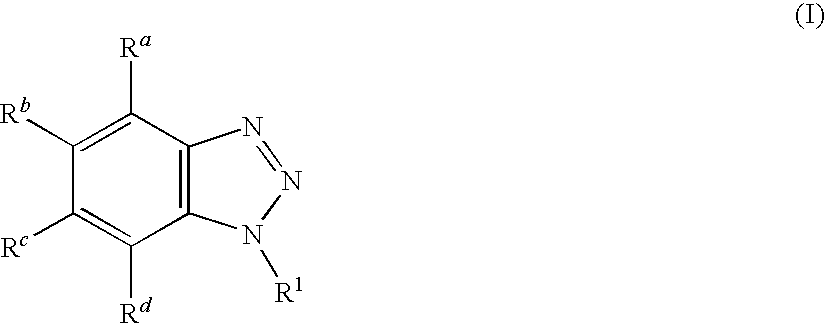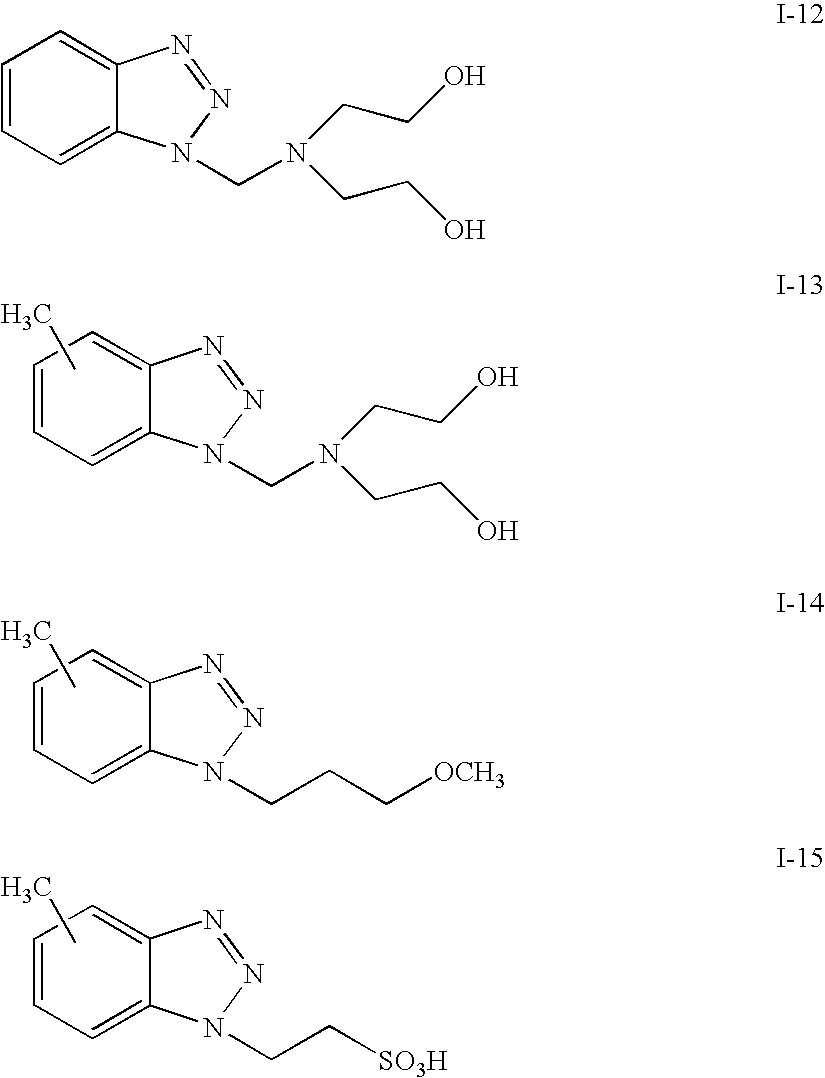Polishing liquid for metal and polishing method using the same
a technology of polishing liquid and metal, which is applied in the direction of lapping machines, manufacturing tools, other chemical processes, etc., can solve the problems of increased cost, dishing, cleaning process, etc., and achieve the effect of improving the polishing rate and planarity
- Summary
- Abstract
- Description
- Claims
- Application Information
AI Technical Summary
Benefits of technology
Problems solved by technology
Method used
Image
Examples
example 1
[0174](a) Specific colloidal silica (trade name: PL-2H, manufactured by Fuso Chemical Co., Ltd.): 0.010 wt %[0175](b) Metal anticorrosive agent (1-(1,2-dicarboxyethyl)benzothiazole): 0.050 wt %[0176](c) Surfactant (or a water-soluble polymer compound) (name: polyoxyethylene alkyl ether): 0.1 wt %[0177](d) Oxidizing agent (hydrogen peroxide solution): 1.0 wt %[0178](e) Organic acid (glycine): 1.0 wt %
[0179]The components (a) to (e) were added to water so that the total amount of the mixture reaches 100%, and then mixed and stirred. Then, the pH of the mixture was adjusted to 6.0 with ammonia gas.
PUM
| Property | Measurement | Unit |
|---|---|---|
| particle size | aaaaa | aaaaa |
| particle size | aaaaa | aaaaa |
| diameter | aaaaa | aaaaa |
Abstract
Description
Claims
Application Information
 Login to View More
Login to View More - R&D
- Intellectual Property
- Life Sciences
- Materials
- Tech Scout
- Unparalleled Data Quality
- Higher Quality Content
- 60% Fewer Hallucinations
Browse by: Latest US Patents, China's latest patents, Technical Efficacy Thesaurus, Application Domain, Technology Topic, Popular Technical Reports.
© 2025 PatSnap. All rights reserved.Legal|Privacy policy|Modern Slavery Act Transparency Statement|Sitemap|About US| Contact US: help@patsnap.com



